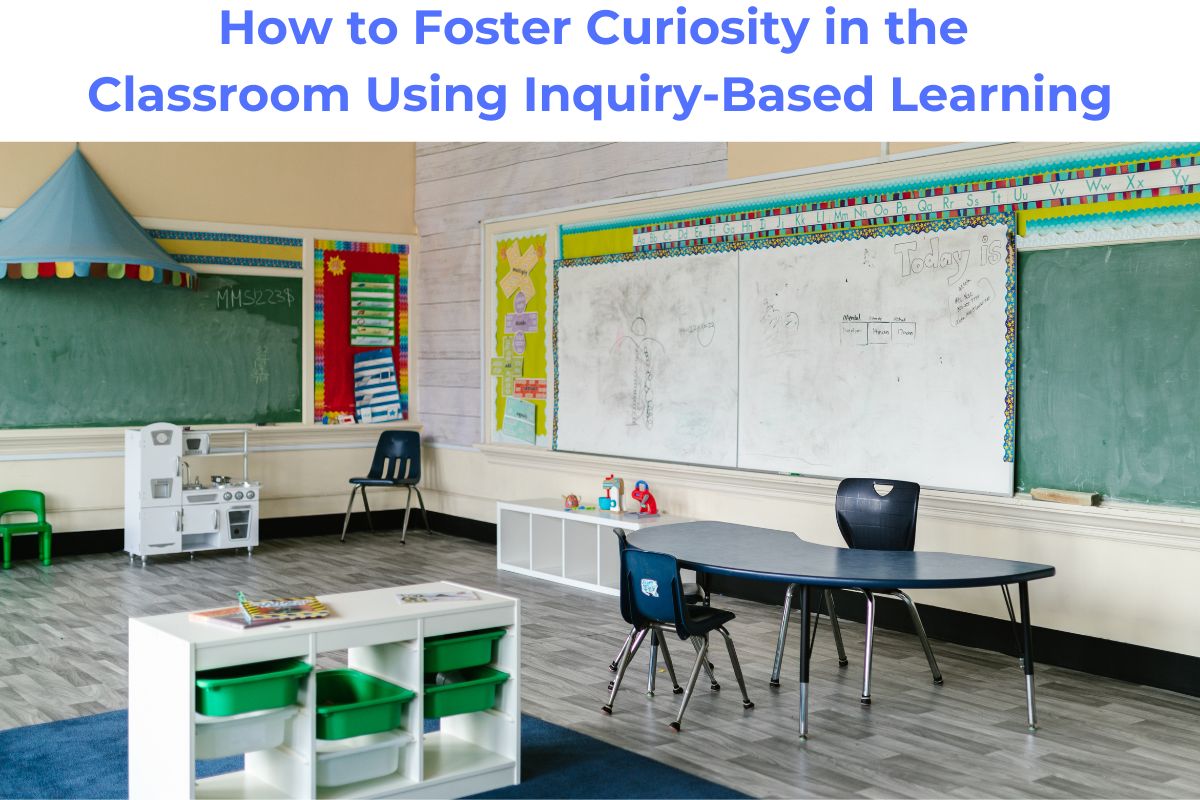
- Published by: Tutor City
- October 06, 2024
- Education
How to Foster Curiosity in the Classroom Using Inquiry-Based Learning
Fostering curiosity in the classroom is a critical goal for educators who want to inspire students to become lifelong learners. Curiosity drives exploration, questioning, and discovery, which leads to deeper understanding and engagement.
One of the most effective ways to encourage curiosity is through inquiry-based learning, a student-centered approach that promotes exploration and critical thinking.
In this post, we'll delve into what inquiry-based learning is, how it works, and how teachers can use it to foster curiosity. We’ll also highlight how the Guided Inquiry Design® model plays a key role in implementing inquiry-based learning effectively in today's classrooms.
What is Inquiry-Based Learning?
At its core, inquiry-based learning is an educational approach where students take an active role in their learning by posing questions, exploring various sources of information, and developing a deeper understanding of the topic at hand. This approach contrasts with traditional methods where the teacher provides information directly and students passively receive it.
The inquiry process encourages students to ask questions, seek answers through investigation, and build knowledge based on their findings. It moves beyond the notion of simply finding "the right answer" and pushes students to think critically about a subject, explore multiple perspectives, and construct their understanding.
According to the definition often used in educational professional development, inquiry-based learning is "a fluid, flexible model that helps guide students through the flow of discovery in the process of learning from a variety of sources of information, preparing them for successful learning and living in the information age."
The Role of Curiosity in Inquiry-Based Learning
Curiosity is the spark that initiates inquiry. When students are curious, they naturally want to explore, ask questions, and seek out answers. This intrinsic motivation leads to more meaningful learning experiences.
Inquiry-based learning feeds this curiosity by allowing students to follow their interests. When teachers design lessons that encourage inquiry, they create opportunities for students to explore topics that pique their interest. As a result, students become more engaged and invested in their learning, which can lead to a lifelong love of learning.
Curiosity in the classroom is not only about finding answers but about embracing the process of learning. Inquiry-based learning encourages students to ask open-ended questions, make connections, and think deeply about the subject matter. It teaches them that learning is not about memorizing facts but about exploring ideas and concepts in a meaningful way.
Key Steps in Fostering Curiosity Through Inquiry-Based Learning
While curiosity might come naturally to some students, fostering it consistently in a classroom environment requires thoughtful planning. Here's how teachers can cultivate curiosity using inquiry-based learning:
1. Encourage Questioning
The heart of inquiry-based learning is asking questions. Teachers should create a classroom culture where students feel comfortable and excited about asking questions. One effective method is to start lessons with a provocative question related to the subject, something that doesn’t have an easy or obvious answer. For example, in a science class, a teacher might ask, "What do you think would happen if there were no trees on Earth?"
This approach not only sparks curiosity but also encourages critical thinking. It shifts the focus from passively receiving information to actively seeking out new knowledge.
2. Use Real-World Problems
Bringing real-world problems into the classroom can help students see the relevance of their learning and engage their curiosity. When students are given the opportunity to investigate issues that have real-life applications, they are more likely to be invested in the learning process.
For instance, teachers could present environmental issues such as climate change or food scarcity as subjects for inquiry. By encouraging students to ask questions like "How can we reduce plastic waste in our community?" or "What causes food deserts?" they can foster deeper curiosity and a sense of responsibility for finding solutions.
3. Promote Hands-On Exploration
Curiosity thrives when students are given the chance to explore ideas through hands-on activities. In inquiry-based learning, students are encouraged to experiment, create, and manipulate materials to discover answers. This tactile approach makes abstract concepts more concrete and engages students on multiple levels.
For example, in a math classroom, students could investigate patterns by using physical objects, like tiles or blocks, to explore symmetry or geometry. Hands-on exploration makes the learning process more interactive and engaging.
4. Facilitate Collaborative Learning
Inquiry-based learning often involves collaboration, where students work together to investigate a topic or problem. This social aspect of learning can stimulate curiosity as students bounce ideas off one another, ask questions, and build on each other's insights.
Teachers can facilitate this by organizing group projects or inquiry stations where students can work together to solve a problem or explore a question. In a history class, for example, students might investigate the causes of a major historical event and present their findings in a group discussion.
5. Model Inquiry Behaviors
Teachers play a crucial role in fostering curiosity by modeling the behaviors they want to see in their students. This includes demonstrating a sense of wonder, asking open-ended questions, and showing enthusiasm for learning new things.
By modeling inquiry behaviors, teachers can show students that curiosity is a valuable part of the learning process. For example, a teacher might share their excitement about a new discovery in their field and invite students to explore the topic further with them.
The Guided Inquiry Design® Framework
While inquiry-based learning provides the structure for fostering curiosity, the Guided Inquiry Design® framework offers a comprehensive, teacher-friendly model that guides students through the inquiry process. Developed over years of research, Guided Inquiry Design® helps students navigate the flow of discovery by using a variety of sources to build new knowledge.
One of the key strengths of Guided Inquiry Design® is its emphasis on guiding students through every step of the inquiry process. This includes initial exploration, asking questions, gathering information, synthesizing findings, and sharing their insights with others.
The framework is flexible, allowing teachers to adapt it to various subjects and grade levels. This makes it an invaluable tool for fostering curiosity, as students are encouraged to take ownership of their learning while receiving the guidance they need to succeed.
In the words of educational experts, inquiry "requires more than simply getting a right answer. It espouses investigation, exploration, search quest research pursuit, and study. It is enhanced by involvement with a community of learners, each learning from the other in social interaction." Guided Inquiry Design® embodies this philosophy, making it a powerful framework for developing critical thinking and curiosity in students.
Conclusion
In a world where information is constantly at our fingertips, fostering curiosity has never been more important. Inquiry-based learning offers an effective approach for cultivating curiosity by encouraging students to ask questions, explore new ideas, and construct their own understanding. Through hands-on exploration, real-world problem-solving, and collaborative learning, teachers can create an environment where curiosity thrives.
The Guided Inquiry Design® framework enhances this process by providing a flexible, structured approach that supports students as they navigate the inquiry journey. With inquiry-based learning and Guided Inquiry Design®, educators can foster not only curiosity but also a lifelong love for learning in their students.
Ultimately, when students are curious, they are more engaged, motivated, and prepared for the challenges of the information age. As educators, fostering this curiosity is one of the most important steps we can take to equip students for success in both school and life.






